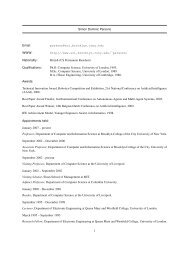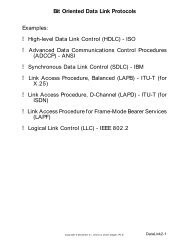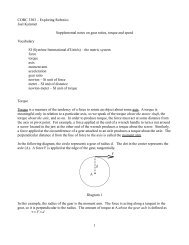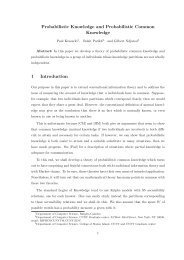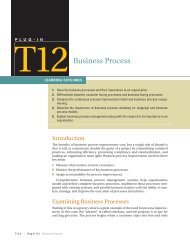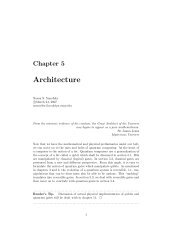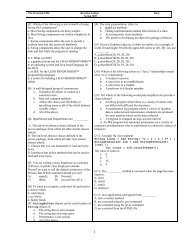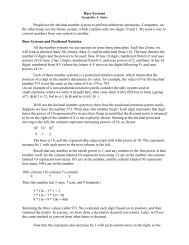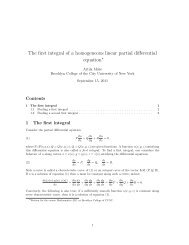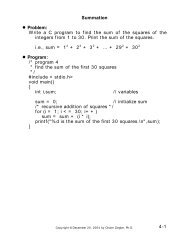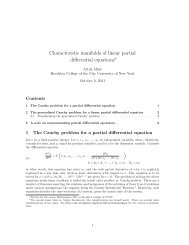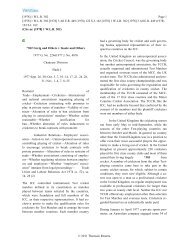CORC 3303 Review
CORC 3303 Review
CORC 3303 Review
Create successful ePaper yourself
Turn your PDF publications into a flip-book with our unique Google optimized e-Paper software.
Multi-tasking: a job of the operating system, managing the CPU usage among processes, context switching.<br />
Considerations in designing a stairway detecting and climbing robot<br />
D. Sensing<br />
Sensors: proprioception / exteroception, types of sensors, issues with sensors (signals, not symbols), different levels of<br />
processing, simple sensors (switch, light) vs complex sensors, active vs passive, sensor fusion, calibration<br />
How roomba works, RCX decision making, light sensor fork and touch sensor fork.<br />
E. Control<br />
Feedback control, types of feedback control (P, PD, PID controls).<br />
Control architectures: principles for organizing a control system, there are: deliberative control (planner-based<br />
architecture, look-ahead with internal representation), reactive control (fast, little internal representation), hybrid<br />
control (combining the two, working in parallel), and behavior-based control (think the way you act)<br />
F. Robot Teams<br />
Benefits of robot teams, their challenges, coordination strategies, communication, control architectures for robot teams.<br />
RoboCup: purposes and goal, leagues of competition, Aibo, NAO.<br />
2. PARTS OF THE LEGO RCX SYSTEM AND BASICS OF THE ROBOLAB ENVIRONMENT<br />
Recognizing parts and explaining their functions, input/output ports, sensors, motors (polarity), lamps, communication,<br />
gears, building blocks.<br />
Recognizing common RoboLab icons and how they are modified.<br />
3. PROGRAMMING FOR THE RCX SYSTEM<br />
Writing simple programs using icons shown above.



